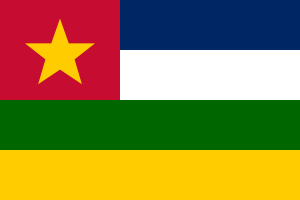Language/Pulaar/Grammar/Questions
Hi Pulaar learners! 😊
In today's lesson, we will be learning how to ask questions in Pulaar. Asking questions is an important part of any language, and it's essential to understand the rules of grammar when forming questions in Pulaar. We'll cover the basics of how to form questions, as well as some more advanced topics.
Basic Question Formation
The basic structure for forming questions in Pulaar is quite simple. All you need to do is add the word 'mbeey' at the end of the sentence. For example:
- Ndeeɗaa? (What?)
- Ndeeɗaa mbeey? (What?)
This is the most common way to form questions in Pulaar. However, there are some other ways to form questions that are worth knowing about.
Using Intonation
You can also use intonation to form questions in Pulaar. This is done by raising the pitch of your voice at the end of the sentence. For example:
- Ndeeɗaa? (What?)
This is a very common way to form questions in Pulaar, and it is often used in informal conversations.
Using Question Words
You can also use question words to form questions in Pulaar. These words include 'ndeeɗaa' (what), 'nde' (where), 'ndu' (when), 'ndam' (why), and 'nduɗaa' (how). For example:
- Ndeeɗaa ndam mbeey? (Why?)
- Ndu nde mbeey? (When where?)
These words can be used to form more complex questions in Pulaar.
Advanced Question Formation
In addition to the basic question formation, there are some more advanced ways to form questions in Pulaar.
Using Negation
You can use negation to form questions in Pulaar. This is done by adding the word 'hinaa' at the beginning of the sentence. For example:
- Hinaa ndeeɗaa mbeey? (What?)
This is a very effective way to form questions in Pulaar, and it is often used in formal conversations.
Using Particles
You can also use particles to form questions in Pulaar. These particles include 'koo' (yes/no questions) and 'ɗo' (rhetorical questions). For example:
- Koo ndeeɗaa mbeey? (What?)
- ɗo ndeeɗaa mbeey? (What?)
These particles can be used to form more complex questions in Pulaar.
Conclusion
Asking questions is an important part of any language, and it's essential to understand the rules of grammar when forming questions in Pulaar. We've covered the basics of how to form questions, as well as some more advanced topics.
If you want to have a better understanding of Pulaar grammar, why not join the Polyglot Club community (PolyglotClub.com)? You can find lots of helpful resources and connect with other language learners from around the world.
If you have any questions, please ask them in the comments section below.
Feel free to edit this wiki page if you think it can be improved. 😎

